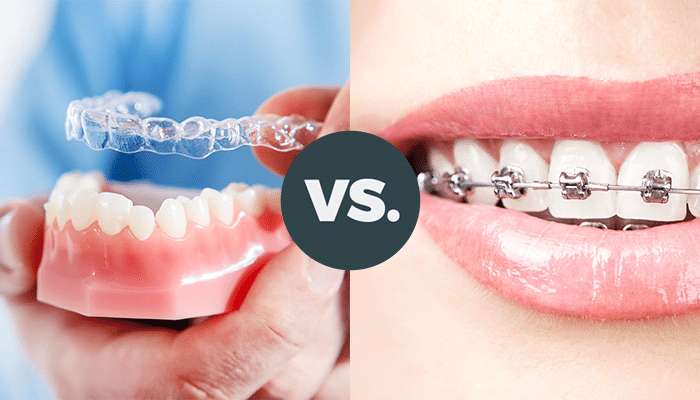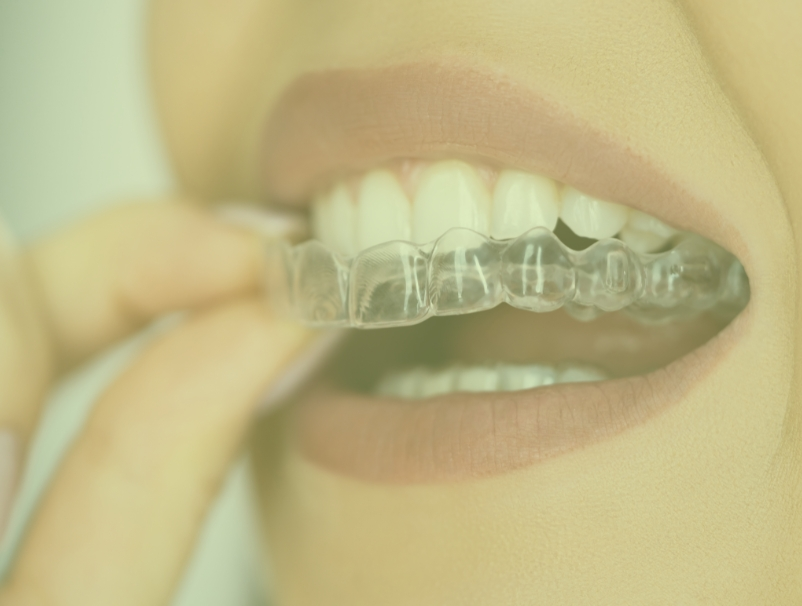When it comes to straightening your teeth, there are two main options: aligners (like Invisalign) and braces. Both have proven to be effective methods for achieving a straighter smile, but the best choice for you depends on several factors, including your dental needs, lifestyle, and personal preferences. This comprehensive guide will help you understand the differences between aligners and braces, the pros and cons of each, and provide actionable insights to help you make the best decision for your dental journey.
Understanding Aligners or Braces
Before diving into the decision-making process, let’s take a closer look at the two main types of orthodontic treatments: Aligners or Braces.
- Braces: Traditional braces consist of metal brackets attached to your teeth, connected by wires and elastic bands. They work by gradually shifting your teeth into the correct positions over time. While they are often visible, they are highly effective for addressing complex dental issues, such as severe misalignment, bite problems, or overcrowding.
- Aligners: Aligners are clear, removable trays custom-made to fit over your teeth. Unlike braces, aligners are nearly invisible, making them a popular choice for people looking for a more discreet treatment option. Aligners are typically used for mild to moderate alignment issues and are often seen as more comfortable than traditional braces.
Key Factors to Consider When Choosing Between Aligners or Braces
1. Effectiveness for Your Dental Needs
One of the most important factors in choosing between aligners and braces is the severity of your dental issue.
- Braces are generally more effective for complex cases, such as severe overcrowding, bite misalignment (overbite, underbite, etc.), or teeth that need significant movement. The fixed nature of braces allows for precise control over tooth movement, making them the go-to option for patients with major dental corrections.
- Aligners, on the other hand, are best suited for mild to moderate dental issues. They are perfect for individuals looking to fix minor misalignments, gaps between teeth, or slight crowding. However, aligners may not be able to address significant bite issues or extreme cases of overcrowding as effectively as braces.
2. Appearance and Aesthetics
For many people, appearance is a major deciding factor. If you’re someone who wants a discreet option that doesn’t draw attention to your teeth, aligners are a clear winner. The transparent trays are nearly invisible, making them a popular choice for adults and teenagers who don’t want the metal wires and brackets of traditional braces showing.
Braces, on the other hand, are highly visible. However, modern braces offer options like ceramic braces or clear braces, which are less noticeable than the traditional metal ones. While braces may not be as discreet as aligners, they still offer more aesthetically pleasing alternatives to the classic metal look.
3. Comfort and Convenience
- Aligners are generally considered more comfortable than braces. Since there are no brackets or wires to irritate the inside of your mouth, aligners tend to cause less discomfort overall. Plus, aligners are removable, which means you can take them out to eat, drink, brush, and floss, giving you more flexibility in maintaining oral hygiene.
- Braces can be uncomfortable, especially in the first few days after adjustments, as the wires and brackets put pressure on your teeth. Additionally, maintaining oral hygiene can be more challenging with braces, as food particles and plaque can get stuck in the brackets. However, modern advancements in orthodontic technology have made braces more comfortable than ever before.
4. Treatment Duration
The length of treatment depends on the severity of your dental issue, but aligners typically offer a faster treatment time compared to braces. On average, aligner treatments take about 12 to 18 months, with some cases completing even sooner.
Braces, particularly for more complex cases, may take longer to show results, with treatments often lasting between 18 months to 3 years, depending on the severity of the issue. However, braces provide more precise control over tooth movement, so they may be necessary for cases that require a more extensive correction.
5. Cost of Treatment
- Braces tend to be more expensive than aligners, especially when considering the additional costs of adjustments, maintenance, and potential complications. Traditional metal braces usually cost between $3,000 to $7,000, depending on the complexity of the treatment and location.
- Aligners, particularly clear aligners like Invisalign, can also be costly. The cost typically ranges from $3,500 to $8,000. While aligners may seem pricier at first glance, keep in mind that the flexibility of removable aligners may reduce the number of office visits, potentially lowering overall costs in some cases.
6. Lifestyle Considerations
Aligners can be much more convenient for people who are busy and want a low-maintenance orthodontic option. Because they are removable, you can continue eating all your favorite foods without worrying about breaking a bracket or dealing with food stuck in your braces. Plus, they are easy to clean, allowing for better oral hygiene.
However, aligners require a high level of responsibility. You need to wear them for 20-22 hours per day, only removing them to eat, drink, or brush your teeth. Failing to wear them consistently can delay treatment and lead to less-than-optimal results.
Braces, while not removable, can be a better fit for people who may struggle to remember to wear their aligners. Since braces are fixed in place, you don’t need to worry about forgetting them or misplacing them.
Practical Tips for Choosing Between Aligners or Braces
- Consult with Your Orthodontist: The first step in making a decision should always be consulting a qualified orthodontist. They will assess your dental needs and guide you in choosing the best treatment option.
- Consider Your Age: Younger patients with still-developing mouths may benefit from braces, as they can offer more flexibility in correcting complex issues. For adults, aligners often present a more convenient and aesthetically pleasing option.
- Think About Your Routine: If you have a busy lifestyle and struggle with frequent appointments, aligners might be the better choice due to their convenience and reduced need for adjustments.
- Long-Term Commitment: Whichever option you choose, remember that orthodontic treatment requires commitment. Stick to your treatment plan and follow your orthodontist’s guidelines to ensure the best results.
Conclusion: Aligners or Braces? The Final Decision
Ultimately, the decision between aligners or braces comes down to your unique needs, preferences, and lifestyle. Braces may be the right choice for those with severe dental issues or those seeking a longer-term, fixed solution. Aligners, on the other hand, offer a more discreet, comfortable, and flexible option for those with mild to moderate issues who prioritize convenience and aesthetics.
Whether you choose braces or aligners, both treatment options can help you achieve the smile you’ve always wanted. Be sure to discuss your options with your orthodontist and weigh the pros and cons to make an informed decision that works best for your teeth and lifestyle.



